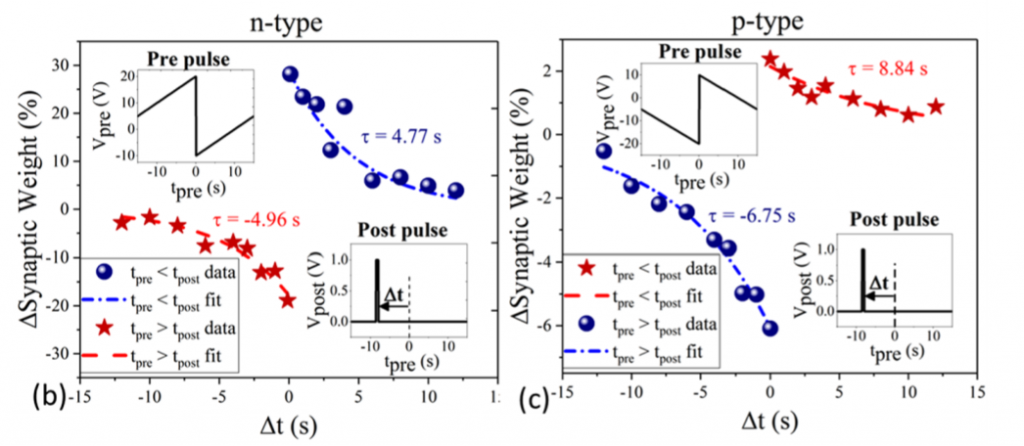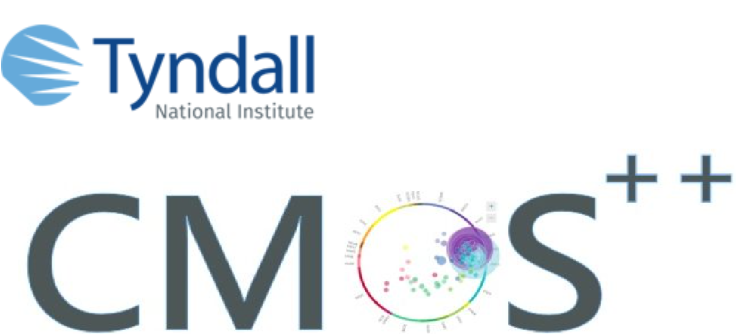Synaptic Transistors have been realised by exploiting the dynamics of trapping and emission which are present in MOSFETs formed using atomically thin Re-doped (n-type) and Nb-doped (p-type) molybdenum disulfde (MoS2) field-effect transistors. The time dependence of the drain current in response to gate voltage pulses is used to mimic the action potentials and associated excitatory postsynaptic current of the biological neural/synaptic system (Figure 1).
The devices demonstrate promising trends for short/long term plasticity in the order of ms/minutes, respectively. The pulse paired facilitation (PPF), which quantifies the short-term plasticity, reveals time constants (τ1 = 27.4 ms, τ2 = 725 ms) that closely match those from a biological synapse. Potentiation and depression measurements indicate the ability of the synaptic devices to traverse several analog states, and the devices emulate a well-known learning rule of spike time-dependent plasticity (STDP) which codifies the temporal sequence of pre- and post-synaptic neuronal firing into corresponding synaptic weights (Figure 2).
These synaptic devices present significant advantages over iontronic counterparts and are envisioned to create new directions in the development of hardware for neuromorphic computing.


Reference
- Bhattacharjee, S., Wigchering, R., Manning, H. G., Boland, J. J., & Hurley, P. K. “Emulating synaptic response in n- and p-channel MoS2 transistors by utilizing charge trapping dynamics”. Nature Scientific Reports, 10,1, (2020) doi:10.1038/s41598-020-68793-7

